RECENT ARTICLES
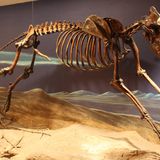
Dire Wolves Were Real
Dire Wolves Were RealGame of Thrones characters like Ghost are based on real wolves that used to roam the AmericasThis article was published in Scientific American’s former blog network and reflects the views of the author, not necessarily those of Scientific AmericanEveryone has their own characters to root for in Game of Thrones. There's no shortage of heroes and social climbers to pick for a favorite, but, as the blood-soaked seasons have wound on, I've been sorry to see my favorites killed off one by one. In Westeros, direwolves are the real underdogs, facing down the same extinction...…Dire Wolves Were RealGame of Thrones characters like Ghost are based on real wolves that used to roam the AmericasThis article was published in Scientific American’s former blog network and reflects the views of the author, not necessarily those of Scientific AmericanEveryone has their own characters to root for in Game of Thrones. There's no shortage of heroes and social climbers to pick for a favorite, but, as the blood-soaked seasons have wound on, I've been sorry to see my favorites killed off one by one. In Westeros, direwolves are the real underdogs, facing down the same extinction...WW…
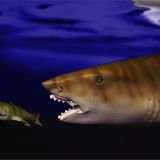
These Prehistoric Sharks Had Jaws Shaped Like Circular Saws and Sawtoothed Scissors
Imagine a great white shark with a set of sawtoothed scissors for a mouth. Ridiculous as that image might seem at first, such a creature once swam through Earth’s seas. More than 300 million years ago, Edestus giganteous bit through its fishy prey with a set of thin, blade like jaws with each serrated tooth set in line right behind the last. There’s nothing quite like this fish alive today, and paleontologists have only recently been able to piece together the relevant clues to understand Edestus and other strange shark relatives from the deep past.The fossils were awaiting technologies...…Imagine a great white shark with a set of sawtoothed scissors for a mouth. Ridiculous as that image might seem at first, such a creature once swam through Earth’s seas. More than 300 million years ago, Edestus giganteous bit through its fishy prey with a set of thin, blade like jaws with each serrated tooth set in line right behind the last. There’s nothing quite like this fish alive today, and paleontologists have only recently been able to piece together the relevant clues to understand Edestus and other strange shark relatives from the deep past.The fossils were awaiting technologies...WW…
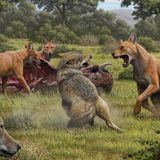
Dire Wolves Were Not Really Wolves, New Genetic Clues Reveal
Dire wolves are iconic beasts. Thousands of these extinct Pleistocene carnivores have been recovered from the La Brea Tar Pits in Los Angeles. And the massive canids have even received some time in the spotlight thanks to the television series Game of Thrones. But a new study of dire wolf genetics has startled paleontologists: it found that these animals were not wolves at all, but rather the last of a dog lineage that evolved in North America.Ever since they were first described in the 1850s, dire wolves have captured modern humans’ imagination. Their remains have been found throughout...…Dire wolves are iconic beasts. Thousands of these extinct Pleistocene carnivores have been recovered from the La Brea Tar Pits in Los Angeles. And the massive canids have even received some time in the spotlight thanks to the television series Game of Thrones. But a new study of dire wolf genetics has startled paleontologists: it found that these animals were not wolves at all, but rather the last of a dog lineage that evolved in North America.Ever since they were first described in the 1850s, dire wolves have captured modern humans’ imagination. Their remains have been found throughout...WW…
57,000 year-old wolf puppy found frozen in Yukon permafrost
A well-preserved wolf pup has been recovered from permafrost in the YukonTerritory of northern Canada, revealing new details about how ancient wolvesspread across North America and Eurasia.December 21, 2020In the summer of 2016, a gold miner in Canada’s Yukon Territory foundan unexpected treasure. While blasting a wall of permafrost with a watercannon to release whatever riches might be found inside, Neil Lovelesssaw something melting out of the ice. It wasn’t a precious mineral, butthe oldest and most complete wolf mummy ever discovered.Loveless quickly placed the frozen pup in a freezer...…A well-preserved wolf pup has been recovered from permafrost in the YukonTerritory of northern Canada, revealing new details about how ancient wolvesspread across North America and Eurasia.December 21, 2020In the summer of 2016, a gold miner in Canada’s Yukon Territory foundan unexpected treasure. While blasting a wall of permafrost with a watercannon to release whatever riches might be found inside, Neil Lovelesssaw something melting out of the ice. It wasn’t a precious mineral, butthe oldest and most complete wolf mummy ever discovered.Loveless quickly placed the frozen pup in a freezer...WW…
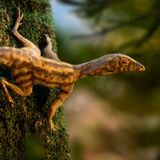
Pterosaur Origins Flap into Focus
For more than 160 million years, pterosaurs soared over the earth. They were as much a part of the Age of Reptiles as dinosaurs were, and they were the first vertebrates to fly by flapping. But how did these leathery-winged creatures evolve to take to the air in the first place? Paleontologists have puzzled over this question for more than a century. Thanks to new fossil evidence from locales as far apart as New Mexico and Argentina, the forerunners of pterosaurs are finally coming into view.Until now, precisely what these predecessors looked like was anyone’s guess. “Pterosaurs appear in...…For more than 160 million years, pterosaurs soared over the earth. They were as much a part of the Age of Reptiles as dinosaurs were, and they were the first vertebrates to fly by flapping. But how did these leathery-winged creatures evolve to take to the air in the first place? Paleontologists have puzzled over this question for more than a century. Thanks to new fossil evidence from locales as far apart as New Mexico and Argentina, the forerunners of pterosaurs are finally coming into view.Until now, precisely what these predecessors looked like was anyone’s guess. “Pterosaurs appear in...WW…

How Cannibalism in the Womb May Have Made Megalodon a Titanic Terror
There’s never been a bigger carnivorous shark than Otodus megalodon. At a maximum body size of 50 feet long, this ancient mako relative was the largest shark ever to chomp its way through the seas. No other shark species, even among its close relatives, grew quite so large. But how did megalodon become so exceptional?A new study, published today in Historical Biology by DePaul University paleontologist Kenshu Shimada and colleagues, suggests that cannibalism in utero may have helped set up the rise of the largest meat-eating shark of all time. The researchers suggest that a biological...…There’s never been a bigger carnivorous shark than Otodus megalodon. At a maximum body size of 50 feet long, this ancient mako relative was the largest shark ever to chomp its way through the seas. No other shark species, even among its close relatives, grew quite so large. But how did megalodon become so exceptional?A new study, published today in Historical Biology by DePaul University paleontologist Kenshu Shimada and colleagues, suggests that cannibalism in utero may have helped set up the rise of the largest meat-eating shark of all time. The researchers suggest that a biological...WW…
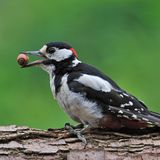
Why Birds Survived, and Dinosaurs Went Extinct, After an Asteroid Hit Earth
Birds are the only dinosaurs left. That might seem strange. A pigeon or a penguin doesn’t look much like a Tyrannosaurus. But the connection is still there, all the way down to the bone. About 150 million years ago, in the Jurassic, the first birds evolved from small, feathery, dinosaurs, becoming another branch on the dinosaur family tree. For more than 80 million years, birds of all sorts flourished, from loon-like swimmers with teeth to beaked birds that carried streamer-like feathers as they flew.With hindsight, birds can be categorized as avian dinosaurs and all the other sorts—from...…Birds are the only dinosaurs left. That might seem strange. A pigeon or a penguin doesn’t look much like a Tyrannosaurus. But the connection is still there, all the way down to the bone. About 150 million years ago, in the Jurassic, the first birds evolved from small, feathery, dinosaurs, becoming another branch on the dinosaur family tree. For more than 80 million years, birds of all sorts flourished, from loon-like swimmers with teeth to beaked birds that carried streamer-like feathers as they flew.With hindsight, birds can be categorized as avian dinosaurs and all the other sorts—from...WW…
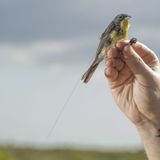
High-Tech Tracking Reveals 'Whole New Secret World of Birds'
For Kirtland’s warblers, migration isn’t as simple as getting from point A to point B. The small songbirds, easily recognizable for the contrast between their yellow bellies and the dark-streaked feathers above, have long been known to spend the winter in the Bahamas before striking west for their breeding grounds in the pine forests of Michigan.What ornithologists didn’t know was that many of these birds keep making long trips even when they arrive at their breeding grounds.“We really had no idea Kirtland’s warblers were doing this,” says Nathan Cooper of the . The new study, published in...…For Kirtland’s warblers, migration isn’t as simple as getting from point A to point B. The small songbirds, easily recognizable for the contrast between their yellow bellies and the dark-streaked feathers above, have long been known to spend the winter in the Bahamas before striking west for their breeding grounds in the pine forests of Michigan.What ornithologists didn’t know was that many of these birds keep making long trips even when they arrive at their breeding grounds.“We really had no idea Kirtland’s warblers were doing this,” says Nathan Cooper of the . The new study, published in...WW…
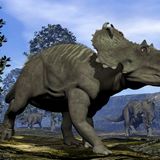
Possible Dinosaur DNA Has Been Found
The tiny fossil is unassuming, as dinosaur remains go. It is not as big as an Apatosaurus femur or as impressive as a Tyrannosaurus jaw. The object is a just a scant shard of cartilage from the skull of a baby hadrosaur called Hypacrosaurus that perished more than 70 million years ago. But it may contain something never before seen from the depths of the Mesozoic era: degraded remnants of dinosaur DNA.Genetic material is not supposed to last over such time periods—not by a long shot. DNA begins to decay at death. Findings from on moa bones show an organism’s genetic material deteriorates at...…The tiny fossil is unassuming, as dinosaur remains go. It is not as big as an Apatosaurus femur or as impressive as a Tyrannosaurus jaw. The object is a just a scant shard of cartilage from the skull of a baby hadrosaur called Hypacrosaurus that perished more than 70 million years ago. But it may contain something never before seen from the depths of the Mesozoic era: degraded remnants of dinosaur DNA.Genetic material is not supposed to last over such time periods—not by a long shot. DNA begins to decay at death. Findings from on moa bones show an organism’s genetic material deteriorates at...WW…
- Total 9 items
- 1